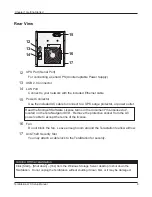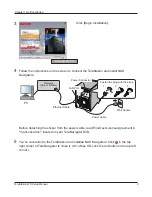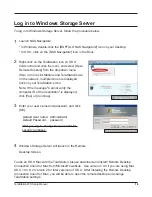
TeraStation WS Setup Manual
13
13
Opening the TeraStation's shared folder from other computers
Install NAS Navigator2 on each computer that will be accessing the TeraStation. You may install
NAS Navigator2 from the included TeraNavigator DVD or download it from www.buffalotech.
com. Once NAS Navigator2 is installed, you can open shared folders as described in the previous
section.
Configuring RAID
By default, the TeraStation is configured with Drive C, a mirrored array accross drives 1 and 2, and
Drive D, a RAID 5 array accross drives 1, 2, 3 and 4. Other configurations are available. Changing
the RAID configuration will erase all data on the drives. Back up any important data before
changing RAID mode. To change RAID settings, consult the TeraStation WS User Manual. The
following RAID modes are available:
RAID 5 array - 3 or 4 hard drives are combined in a single array. Parity data equivalent to 1 hard
drive is saved, so if a single drive malfunctions, data can be recovered by replacing the failed drive.
Usable capacity is the total space of all drives combined, minus the space of a single drive.
Mirrored Volume - Partitions on 2 drives are paired in a mirror array. Identical data is written to
each partition. Usable capacity of the array is the size of whichever partition is smallest. If a drive
malfunctions, data from the volume can be recovered by replacing the failed drive.
Striped Volume - Partitions on 4 drives are combined into one array. Fast write performance makes
this one of the best performing types of volumes. No parity is stored, so if any drive fails, all data
on the volume is lost.
Spanning Volume - Unused partitions from multiple hard drives are combined in one usable volume,
allowing you to make better use of partitions that might not be usable otherwise. If any drive used
the the volume fails, all data on the volume is lost.
Simple Volumes - Drives are addressed separately in Windows. No array is used.
Never disable the TeraStation's LAN port in Windows Storage Server. If you do, you will not be
able to access the TeraStation. If you disable it, you will have to perform a system recovery to be
able to use the TeraStation again.








































